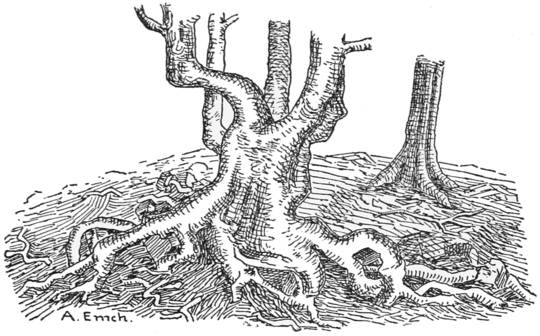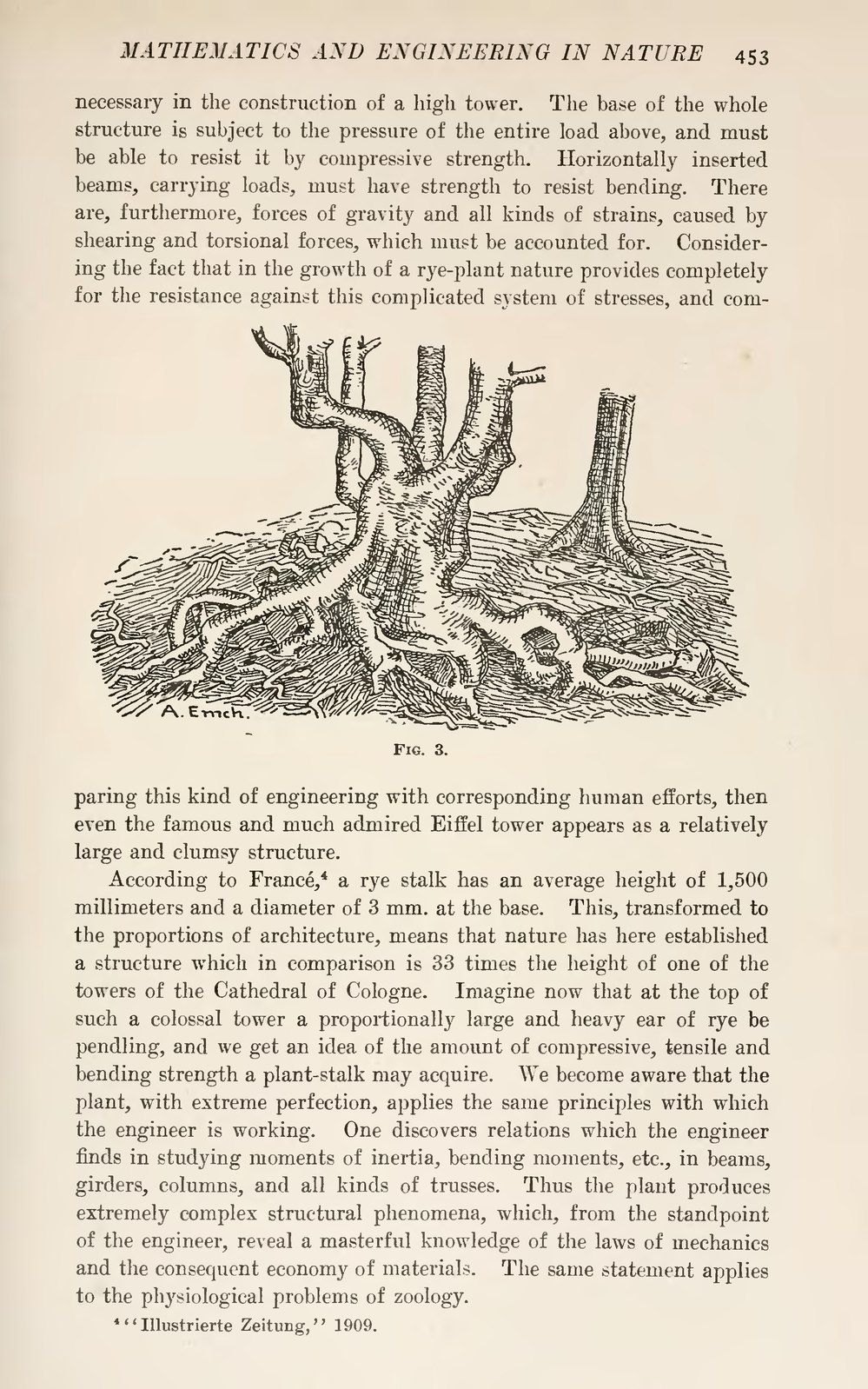necessary in the construction of a high tower. The base of the whole structure is subject to the pressure of the entire load above, and must be able to resist it by compressive strength. Horizontally inserted beams, carrying loads, must have strength to resist bending. There are, furthermore, forces of gravity and all kinds of strains, caused by shearing and torsional forces, which must be accounted for. Considering the fact that in the growth of a rye-plant nature provides completely for the resistance against this complicated system of stresses, and comparing
this kind of engineering with corresponding human efforts, then even the famous and much admired Eiffel tower appears as a relatively large and clumsy structure.
According to Francé,[1] a rye stalk has an average height of 1,500 millimeters and a diameter of 3 mm. at the base. This, transformed to the proportions of architecture, means that nature has here established a structure which in comparison is 33 times the height of one of the towers of the Cathedral of Cologne. Imagine now that at the top of such a colossal tower a proportionally large and heavy ear of rye be pendling, and we get an idea of the amount of compressive, tensile and bending strength a plant-stalk may acquire. We become aware that the plant, with extreme perfection, applies the same principles with which the engineer is working. One discovers relations which the engineer finds in studying moments of inertia, bending moments, etc., in beams, girders, columns, and all kinds of trusses. Thus the plant produces extremely complex structural phenomena, which, from the standpoint of the engineer, reveal a masterful knowledge of the laws of mechanics and the consequent economy of materials. The same statement applies to the physiological problems of zoology.
- ↑ "Illustrierte Zeitung," 1909.

